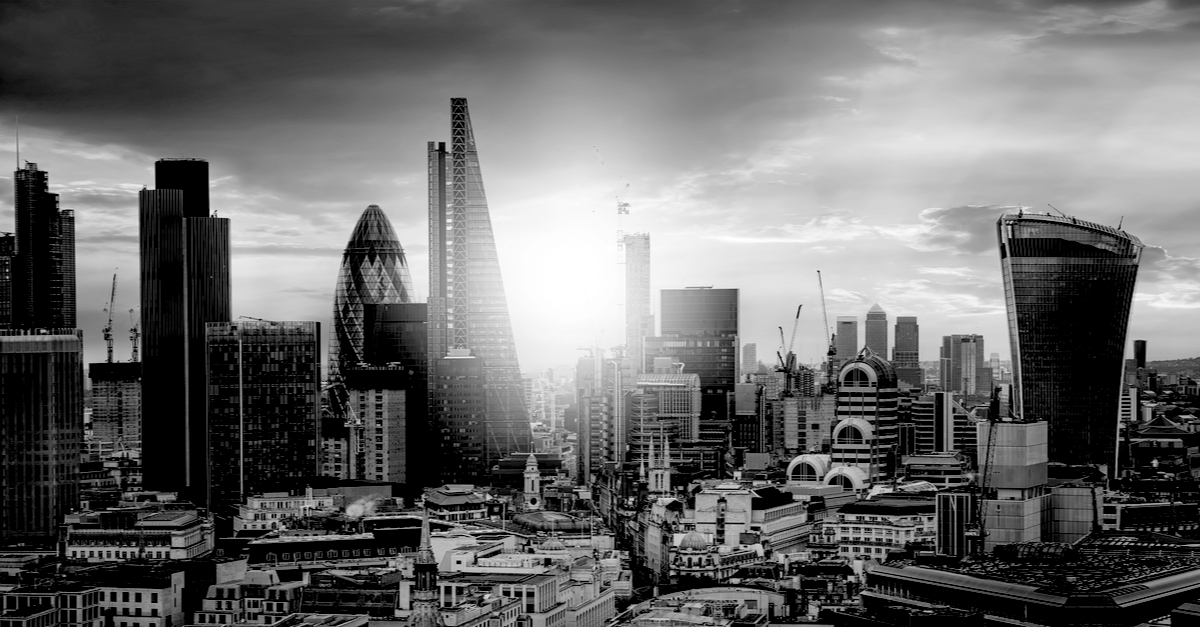
The City of London’s Plans in the Post-Pandemic Period
Last week the City of London Corporation unveiled plans to adapt its buildings and public spaces for a post-pandemic world, attracting widespread attention specifically for its commitment to adding 1,500 new dwellings by 2030.
The announcement was greeted as compelling evidence of the structural shift taking place within property markets, from office to residential conversion, amid the rise in remote working. However, we should not misconstrue this as a sign that the Square Mile will soon turn into a mixed-use development.
Looking at the period from 2008 to 2018, the number of dwellings in the City of London grew 19%, according to MHCLG data. Building 1,500 new homes over the next nine years would only slightly surpass this growth, with an increase of 23%. Housing currently constitutes only 1% of all stock in the City (per data from the Valuation Office Agency) and the projected number of additional dwellings announced will not materially change that ratio or indeed the nature of the City itself.
Clearly the ambition to further increase housing supply in the City is still very welcome, particularly after a hiatus with no new dwellings delivered in 2019-20. But with just over 6,500 dwellings as of 2019, the City’s housing stock is and will remain a very small portion of London’s still-undersupplied housing market.
The City of London Corporation’s announcement does, nonetheless, point to some broader residential market trends, in both London and the UK. The pandemic has reduced underlying long-term demand for other asset classes – most obviously retail, but also potentially some office sub-markets– while the UK housing market still suffers from a severe structural undersupply. Office to residential conversions have therefore garnered a lot of interest. Conversions have better green credentials than new-builds, generating significantly less embodied carbon. There is also a significant shift from large occupiers towards modern, new office buildings with excellent sustainability credentials – occupier wellness features and amenities, lower operational carbon emissions and lower running costs. That combination of factors should drive repurposing and retrofitting, particularly of secondary, older stock, as a major industry theme in the coming years.
In the City, the issue of expense and affordability inevitably acts as a limiting factor, with high land values creating an overwhelming economic incentive for developers to focus on ultra-high-end schemes. This should be less the case in other office sub-markets throughout the UK, allowing the delivery of more affordable homes at greater scale elsewhere. But far from all properties will be appropriate for residential conversion. Issues such as overall scale, floorplans, ceiling heights, lift shaft location and M&E configuration all pose challenges to a successful redevelopment, making careful asset selection and design paramount.
The other, somewhat overlooked and arguably more interesting parts of the Corporation’s announcement were the focus on attracting leisure to the Square Mile and the attempt to woo the tech sector, which has clustered to the East of the City at Silicon Roundabout since 2008. These key areas of focus point to other emerging themes relevant to the real estate market across the UK.
The Corporation announced it will curate an “ecosystem of high-potential tech-led businesses”, piloting a 5G network, and opening a Small Business Research and Enterprise Centre. The co-occupation of global banking and financial services combined with the fast-growing technology sector in the City is a compelling proposition for start-ups, scale ups and established players alike. According to Dealroom, venture capital investment into London’s tech sector remained resilient in 2020 despite the global pandemic, with the capital’s tech companies raising a total of $10.5bn in VC funding last year – a near record amount ($10.7bn in 2019).
London ranks as the second fastest growing tech ecosystem in the world since 2016 with a tech sector fast showing signs of maturity; growing levels of later-stage funding, a more internationally diverse mix of investors and innovation and success in a variety of sectors from FinTech, Green Finance, Cyber Security, Energy, Health, Food and Enterprise Software. This will have clear implications for the real estate sector in the coming years, as well as for London’s digital infrastructure (let’s bear in mind that South Korea now has 14m 5G users and 115,000 base stations).
The pandemic has accelerated underlying trends in how we live, work and experience leisure. With a generation of young professionals focused on work-life balance, on spending their earnings on experiences and on conscious living, the provision of leisure and wellness activities and amenities, green public spaces, cycle lanes and walkways as well as the cultural offering in historically commercial districts like the City will be an important factor in attracting young talent. Concepts like the ‘15-minute City’, developed by Professor Carlos Moreno of the Sorbonne to describe a city in which all urban necessities are reachable within a quarter of an hour, are increasingly resonating with urban dwellers. Proximity to residential and leisure property will increasingly inform the choice of commercial property occupiers, and vice versa.
The 1,500 new homes planned for the City of London will not dramatically alter the nature of the area or London’s housing market. However, the Corporation’s plan to embrace societal and business trends to ensure the City remains relevant in the decade ahead is one that should be heeded and emulated by developers, local governments and urban planners across the UK.

















